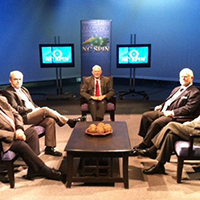NC Board of Transportation won’t give local elected officials more ‘local’ input on DOT projects
Published November 8, 2013
by Bruce Siceloff, News and Observer, November 8, 2013.
The state Board of Transportation refused Thursday to give local elected officials a bigger share of the “local” input that will help determine where DOT dollars are spent in the future.
Board members agreed unanimously to stick with an earlier decision – criticized by local officials and by transportation leaders in the House of Representatives – to assign half of the “local” vote on transportation project priorities to DOT’s 14 division engineers.
When DOT decides under the new Strategic Mobility Formula how to distribute money for regional and local improvements, division engineers will have the same say as local metropolitan and rural planning organization boards, whose members are town and county elected officials.
Division engineers are regional administrators stationed across the state, with job descriptions that explicitly require political loyalty to the governor. Board members are the governor’s political appointees, and they work closely with their respective division engineers.
Ned Curran of Charlotte, the board chairman, disputed the idea that local elected leaders might know more about community needs.
“I was perplexed with the notion that division engineers are not intimately familiar with conditions throughout their jurisdiction,” Curran said. He said it would be wrong to give local officials an edge over the DOT division engineers.
“Equal is equal,” Curran said. “If we leave it at 50-50, no one is advantaged. And that’s the foundation for a working, trusting relationship.”
The Strategic Mobility Formula, proposed by Gov. Pat McCrory and enacted by the legislature this year, is aimed at making smarter use of transportation dollars by blending local input with objective, “data-driven” analysis of highway, transit, rail, ferry, aviation and bicycle-pedestrian projects.
DOT’s objective analysis counts for 100 percent of the rating on major, statewide projects, 70 percent on regional projects, and 50 percent on local projects in the 14 DOT divisions. The law looks to “local” input for the remaining 30 percent of the vote on regional projects and 50 percent of the vote on local division projects.
House members of the Joint Legislative Transportation Oversight Committee complained at a recent meeting that they had not intended for DOT officials to claim any part of that local vote. Some Senate members agreed with the DOT approach.
Raleigh Mayor Nancy McFarlane, chair of the N.C. Metropolitan Mayors Coalition, and Huntersville Mayor Jill Swain, the urban group’s vice chair, urged DOT officials in an Oct. 3 letter to give more clout to the local officials in their respective areas.
“We believe this large chorus of voices should not bear equal weight to two division engineers who ultimately do not report to the people in our region, but to the NCDOT in Raleigh,” McFarlane and Swain wrote.
A group of local and DOT planners advising DOT administrators on the new law had recommended a small shift in the balance on division-level project decisions. Give local planning boards 30 percent of the vote and the DOT division engineers 20 percent, they said, instead of an even share of 25 percent apiece.
Curran protested that this recommendation would give local elected officials “150 percent of the weight of the division engineer.” The Board of Transportation voted unanimously to reject the proposed change.







